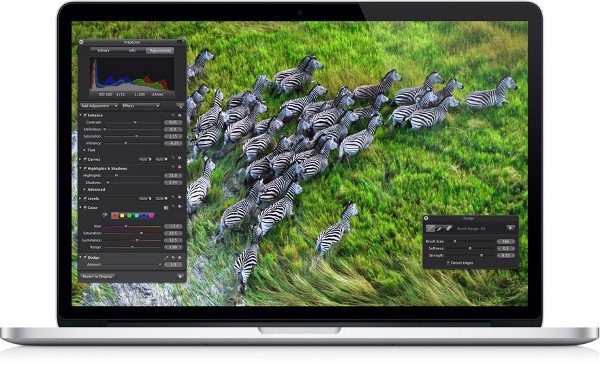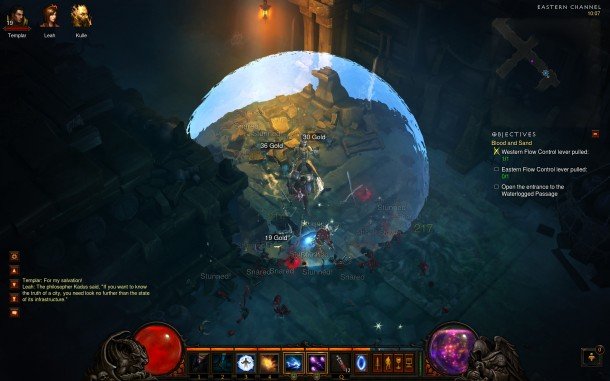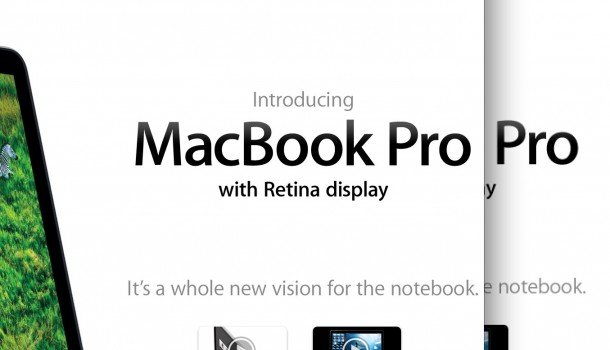Why the MacBook Pro makes me angry

Last week, I had a chance to sit down and play with the new MacBook Pro for a while. That's the one with 2880x1800 pixels crammed into a 15.4inch 'Retina' screen. It makes me angry – angry enough to resurrect a rant I had in the magazine just a few issues back.
Over the last ten years' monitor manufacturers have been selling us short with screen technology, and it's really annoying that Apple has been the lone voice to call them out.
Before I begin, let me be clear. I have no love for Apple: I've only ever owned one Apple product (the best it's ever made, the iPhone 3GS) and I won't be rushing out to buy a Retina-screened MacBook. I won't buy one because no-one needs to spend £2300 on a PC of any kind. The fact you can't upgrade it at a later date and it's apparently quite hard to recycle are big black marks against it too.
But from a user's point of view, the MacBook Pro with Retina Display is the best laptop in the world right now. Leaving the design to one side, even before you get to discussions about the resolution and whether or not you can see the pixels, comparing that 16:10 screen with its exceptionally rich IPS colours to a typical 16:9 TN panel reminds me of the first time I drank a cup of 'proper' well roasted coffee after being raised on sub-Gold Blend instant. That was when I first realised that appreciating quality doesn't make you a snob.

Using the Retina display isn't life changing, nor will it ruin every other screen in the world for you. It's not a necessity and it's not something you should bankrupt yourself to own. It's not even noticeably different for working on - who really writes or designs databases while squinting to see rough edges of pixels? But it is a perceptibly better, more pleasant, quality technology in a Robert M Pirsig sort of way. It is, more importantly and the focus of my anger, the future. Retina is simply better than any one of a number of screen 'innovations' over the last decade.
For games, it's astounding. Only Diablo III and Portal 2 supported the native 2880x1880 resolution when I tested it, but they look incredible. They're pin sharp and colourful, because they're fully anti-aliased without the need to turn fake anti-aliasing on. And because you don't need to turn AA on, both games were smooth and playable (only just for Diablo III, moreso for Portal 2) with every other image quality setting turned up to it highest setting using the built in GeForce GT660M. To put that in context, that graphics card is the equivalent of a bottom barrel GeForce GT640 on the desktop.
The effect of using the MacBook Pro for me has been to confirm something I've argued for years: people who make monitors and graphics cards have wasted vast amounts of money and time on perfecting technologies like anti-aliasing and stereoscopic 3D, when the best thing you can do to games is increase the resolution.
The biggest gaming news, reviews and hardware deals
Keep up to date with the most important stories and the best deals, as picked by the PC Gamer team.
The depressing thing is that the desktop display which has something close to the 221 pixel per inch density of Retina has already been made. In 2001. That's right: Apple is winning plaudits for its 'Retina' displays a full decade or more after IBM was trying out a similar but forgotten philosophy. Its T220 monitors and R50 laptops from the early 2000s were both in line with what Apple is doing now, with resolutions of 3840x2400 pixels in a 22inch LCD and 2048x1536 on a 15inch notebook. But then IBM quit the hardware business before they had a chance to hit mass production prices. It sold its assets to Lenovo and everyone raced to the bottom as far as displays went, even to the extent of abandoning the Golden Ratio of 16:10 ratio in favour of the TV standard 1080p.

They got lazy. They tried to foist crap like stereoscopic 3D and glasses on us. Last year's line-up of gaming laptops was just pitiful, as performance and quality were sacrificed by almost every manufacturer in order to include an expensive 3D display no-one wanted or could even use, because the graphics processors weren't powerful enough for alternative frame rendering.
There have been some good things in display-land. eIPS has been brilliant over the last couple of years for weaning us off of sub-standard TN panels. Now, in the wake of the MacBook Pro we just have to hope that someone is working on a cost effective, high density eIPS display for release within the next few months. Otherwise Apple's next Cinema Displays and the inevitable Apple TV will be the devices to intro it. Again.
There are counter arguments to all this, and reasons behind Apple's timing. Even with the hardware at the MacBook Pro's disposal framerates aren't especially high, especially considering the generally low requirements for Diablo and Portal. Introducing higher density displays any earlier would arguably have been too much for graphics cards to keep up with. And as ever, reviewers - and I include myself - need to take some blame for lack of ambition on behalf of hardware vendors because of our relentless focus on price.
By the same logic, though, NVIDIA and AMD would have sold more graphics cards, like they used to gamers upgraded regularly. Plus, 2560x1600 - the resolution of a 30inch display, was playable with a mid-range card several years ago.
Despite being a resolution junkie, I was initially sceptical about Retina displays when they were announced on the iPhone and iPad, and I still can't really see the advantage over competing tablets and handsets with fewer pixels at those screen sizes. But on the desktop and laptop front I'm convinced. I want this kind of display for all systems, and soon. And so should you.

